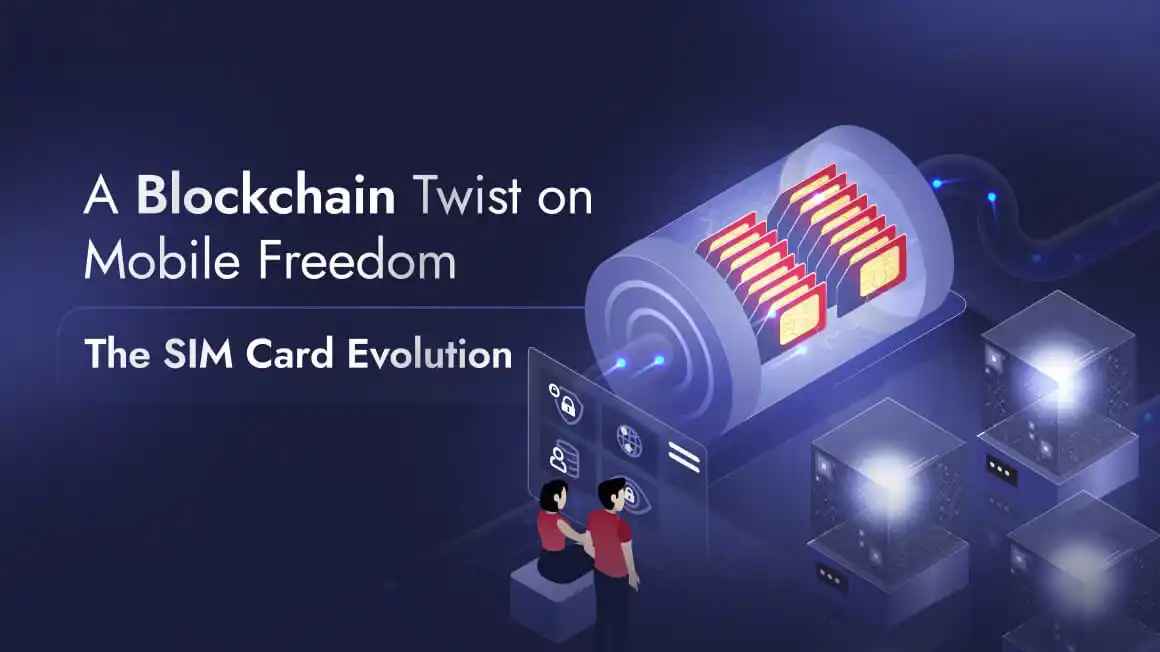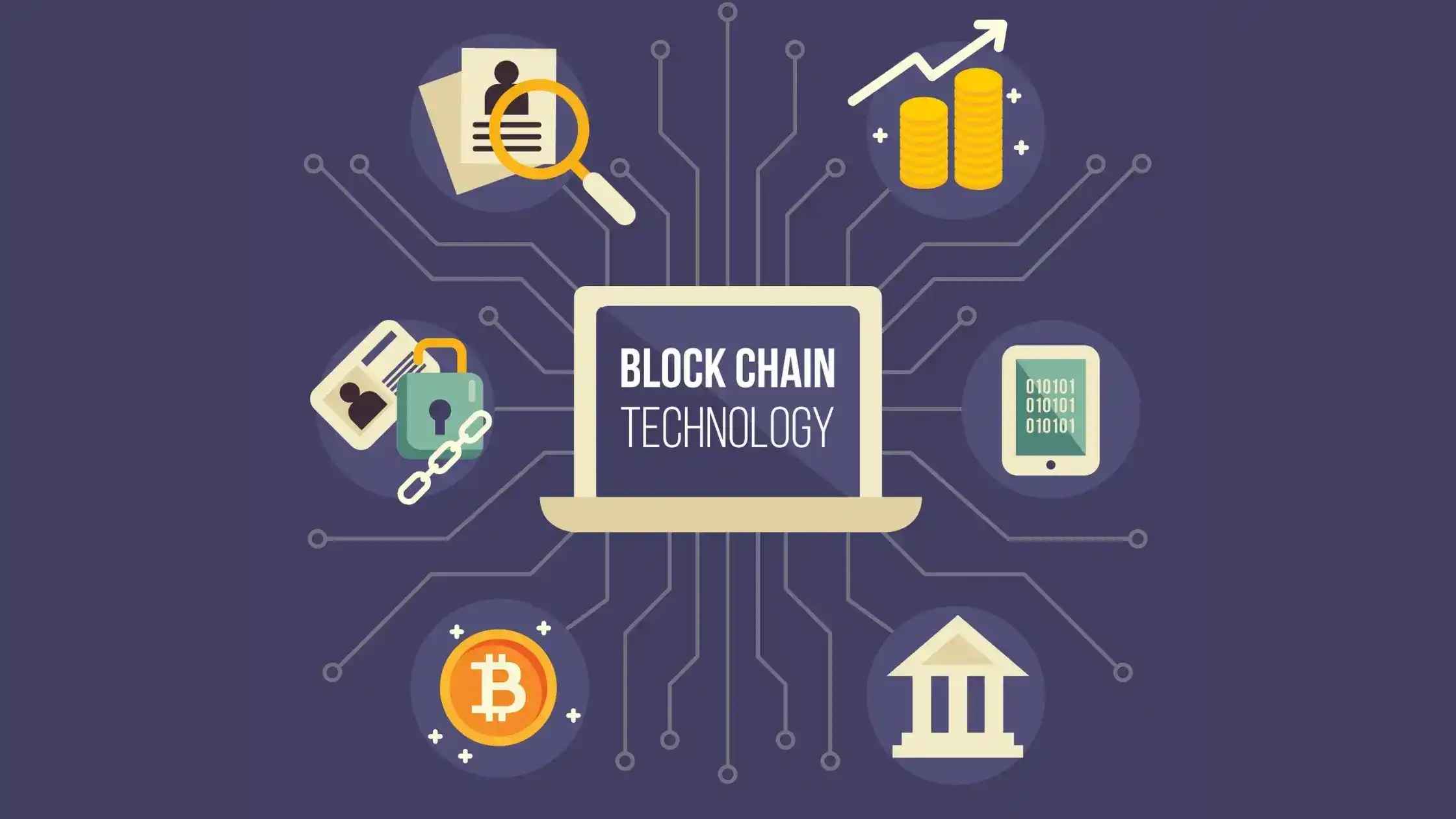Crypto Better SIM : A Smarter, Safer Future of Mobile
Updated on : 01 May 2025

Image Source: google.com
Table Of Contents
- 1. Introduction
- 2. Replacing Traditional SIM Cards with Blockchain Technology
- 3. Merging Blockchain with the Telecom Sector
- 4. Google’s Disruption of the Telecommunications Landscape
- 5. Emerging Market Opportunities through Blockchain Integration
- 6. Future Trends in Blockchain-Based Telecommunications
- 7. Establishing Ultra-Secure Networks Using Blockchain
- 8. Blockchain Adoption by Leading Telecom Companies
- 9. Exploring the End of Physical SIMs with Blockchain
- 10. Decentralized Telecom Infrastructure: A New Era
- 11. Blockchain’s Role in Reducing Telecom Fraud and Hacks
- 12. Smart Contracts in Managing Telecom Services
- 13. FAQs
Table Of Contents
Introduction
Say goodbye to old-school SIM cards! 🚀 Crypto-powered SIMs are here—blending blockchain with mobile tech to give you ultra-secure, borderless, and private connectivity. No more roaming fees, SIM swaps, or hacks. The future of mobile is decentralized! 📱🔐
Replacing Traditional SIM Cards with Blockchain Technology

Image Source: google
- 🔐 Enhanced Security
- Blockchain tech makes SIMs more secure by preventing SIM swapping, cloning, and hacking.
- 🌍 Global Connectivity
- No need for physical SIM cards—connect to networks worldwide without changing cards.
- 🧾 Identity on the Blockchain
- Your mobile identity is securely stored and verified on the blockchain, reducing the risk of fraud.
- 📱 Digital SIM (eSIM 2.0)
- A crypto-powered eSIM can be downloaded and managed digitally—no more plastic cards.
- 🚫 No Roaming Fees
- Decentralized networks let users avoid costly roaming charges when traveling.
- 🔄 Easy Switching
- Instantly switch between mobile providers via smart contracts—no paperwork needed.
- 🛰️ Integration with IoT Devices
- Blockchain SIMs can easily connect IoT devices securely and efficiently.
- 💸 Pay-as-You-Go with Crypto
- Use cryptocurrency to pay for data and calls, enabling more flexible and transparent billing.
Merging Blockchain with the Telecom Sector
| Use Case | Description |
|---|---|
| Secure Identity Management | Use blockchain for decentralized KYC and SIM card verification to prevent identity theft. |
| Roaming & Billing Automation | Smart contracts enable real-time, transparent roaming agreements and automated billing. |
| Fraud Prevention | Combat telecom fraud (like SIM swapping) with tamper-proof blockchain records. |
| 5G Network Sharing | Enable decentralized network sharing agreements among providers using smart contracts. |
| Supply Chain Transparency | Track telecom hardware and inventory across the supply chain using blockchain ledgers. |
Explore Blockchain Services with Hexadecimal Software Expertise
Google’s Disruption of the Telecommunications Landscape
- Google Fiber
- High-speed internet service offering gigabit speeds.
- Challenges traditional ISPs by offering faster, cheaper internet in selected cities.
- Project Fi (Now Google Fi Wireless)
- A mobile virtual network operator (MVNO) that uses multiple carriers (T-Mobile, US Cellular, etc.) for better coverage.
- Smart switching between networks and Wi-Fi for seamless connectivity.
- Android Ecosystem
- Dominates the mobile OS market, shaping hardware and software integration across telecom.
- Encourages VoIP and messaging apps (like Google Meet, Duo) over traditional carrier services.
- RCS (Rich Communication Services)
- Modernizes SMS with features like read receipts, media sharing, and typing indicators.
- Aims to replace outdated SMS/MMS and reduce reliance on carrier messaging.
- Subsea Cable Investments
- Google invests in global undersea internet cables (e.g., Equiano, Dunant) to improve internet infrastructure.
- Reduces dependence on third-party telecom networks for data transfer.
- Cloud Infrastructure for Telecoms
- Google Cloud supports telecoms with 5G edge computing, AI, and data analytics.
- Helps traditional telecom companies modernize and compete.

How is blockchain making mobile apps more secure, transparent, and decentralized?
Emerging Market Opportunities through Blockchain Integration
| Opportunity | Description |
|---|---|
| 💸 Cross-Border Payments | Enable fast, low-cost, and transparent international money transfers using blockchain-based currencies. |
| 📱 Decentralized Mobile Payments | Offer mobile wallet solutions in underbanked regions using blockchain for secure transactions. |
| 🆔 Identity Verification | Provide digital IDs for citizens in emerging markets through blockchain, improving access to services. |
| 🤖 Smart Contract-Based Services | Automate micro-loans, insurance, and utility billing using blockchain smart contracts. |
| 🚚 Supply Chain & Logistics | Increase transparency and traceability for goods in local markets, boosting trust and efficiency. |
Future Trends in Blockchain-Based Telecommunications
| Trend | Description |
|---|---|
| Decentralized 5G Networks | Use blockchain to manage and incentivize community-owned 5G infrastructure. |
| Blockchain-Powered IoT Connectivity | Securely manage billions of IoT devices through decentralized networks. |
| Tokenized Data Plans | Offer data-as-a-currency models, letting users trade or earn data through tokens. |
| Automated SLAs via Smart Contracts | Enforce service-level agreements automatically with blockchain transparency. |
| Inter-Carrier Blockchain Settlement | Streamline payments and settlements between telecom providers using distributed ledgers. |
Transform Your Business with Hexadecimal Software Blockchain Expertise
Establishing Ultra-Secure Networks Using Blockchain

Image Source: google
- Decentralized Network Architecture
- Removes central control points, reducing vulnerability to DDoS and other centralized attacks.
- Immutable Ledger for Network Activity
- All transactions and access logs are stored on a tamper-proof blockchain, enhancing traceability and accountability.
- Enhanced Encryption & Key Management
- Cryptographic keys can be managed securely on-chain, improving encryption and access control.
- Secure Device Authentication
- Each device gets a unique, verifiable blockchain ID, preventing spoofing and unauthorized access.
- Real-Time Threat Monitoring
- Blockchain consensus mechanisms enable quick detection and isolation of anomalies or breaches.
- Trustless Communication Channels
- Enables secure peer-to-peer communication without needing a central authority.
Blockchain Adoption by Leading Telecom Companies
| Company | Blockchain Initiative |
|---|---|
| Telefónica | Uses blockchain to secure customer data and launched a blockchain-based platform for digital services. |
| Deutsche Telekom | Invests in blockchain infrastructure and supports Ethereum staking via its subsidiary T-Systems. |
| Verizon | Filed patents for blockchain-based privacy and security solutions in mobile communications. |
| Vodafone | Explores blockchain for IoT device identity and global roaming settlement through the Chainlink network. |
| Orange | Invests in blockchain startups and integrates blockchain into supply chain transparency projects. |
Seamless IoT Integration with Hexadecimal Software Expertise
Exploring the End of Physical SIMs with Blockchain
- Rise of eSIM & iSIM Technology
- Physical SIM cards are being replaced by embedded SIMs (eSIM) and integrated SIMs (iSIM), enabling remote provisioning.
- Blockchain-Based Identity Management
- Blockchain allows secure, decentralized management of user identities and SIM credentials.
- Enhanced Security & Privacy
- eSIM profiles linked to blockchain can’t be tampered with, reducing SIM swapping and identity theft risks.
- Simplified Global Roaming
- Blockchain smart contracts can automate and manage roaming agreements across countries and carriers.
- On-Chain SIM Lifecycle Tracking
- Every action (activation, deactivation, plan changes) can be logged immutably on a blockchain ledger.
- User Control & Transparency
- Users gain more control over their mobile identity and data, with full visibility into access and usage history.

Looking to integrate smart, connected solutions? Explore the power of IoT today.
Decentralized Telecom Infrastructure: A New Era
| Concept | Description |
|---|---|
| Community-Owned Networks | Local users operate and maintain telecom infrastructure, earning rewards for participation. |
| Blockchain-Based Network Governance | Decision-making and upgrades are managed through transparent, decentralized voting systems. |
| Tokenized Incentives | Users and operators earn tokens for sharing bandwidth, validating data, or maintaining network health. |
| Decentralized Spectrum Sharing | Smart contracts manage spectrum allocation, allowing dynamic and fair usage without central control. |
| Edge Computing Integration | Combines blockchain with edge computing to deliver faster, more secure telecom services at the local level. |
Blockchain’s Role in Reducing Telecom Fraud and Hacks
| Use Case | Description |
|---|---|
| 🔒 SIM Swap Prevention | Blockchain secures user identity and device authentication, making it harder to hijack mobile numbers. |
| 📞 Caller ID Spoofing Protection | Authenticates call origin on-chain, reducing fake caller IDs and scam calls. |
| 🆔 Secure KYC & Onboarding | Stores and verifies customer data using blockchain, preventing fake or duplicate identities. |
| 🧾 Fraud Detection & Auditing | Immutable logs help detect irregularities and support faster, more accurate audits. |
| 🌍 Secure Roaming Agreements | Smart contracts automate and verify roaming transactions, minimizing billing fraud. |
Elevate Your Business with Hexadecimal Software AI & ML Expertise
Smart Contracts in Managing Telecom Services

Image Source: google
- Automated Service Agreements
- Smart contracts can automatically enforce terms between telecom providers and customers (e.g., data limits, billing cycles).
- Real-Time Billing & Payments
- Enables instant and transparent billing based on actual usage, reducing billing disputes and delays.
- Roaming Management
- Smart contracts handle roaming agreements between operators, ensuring accurate, real-time settlements.
- Fraud Prevention
- Rules coded into smart contracts can detect and prevent unauthorized access or suspicious activities.
- Network Resource Allocation
- Automatically distributes bandwidth or frequency spectrum based on demand and predefined rules.
- Transparent SLA Enforcement
- Service-level agreements (SLAs) can be monitored and enforced without third-party intervention, ensuring consistent quality of service.
- Seamless Onboarding & KYC
- Automates the customer onboarding process with secure identity verification and contract signing on-chain.
FAQs
Q.1. What is a Crypto-Powered SIM?
A : crypto-powered SIM integrates blockchain technology into mobile SIM cards, enabling secure digital identity, encrypted communication, and crypto wallet functionality directly on the SIM.
Q.2. How is it different from a traditional SIM?
A : Unlike traditional SIMs, crypto SIMs offer enhanced privacy, decentralized identity management, and can support blockchain-based apps and services.
Q.3. What are the benefits for users?
A : Stronger protection against SIM swap attacks,
Built-in digital identity verification,
On-device crypto transactions, Better control over data and privacy.
Q.4. Can I use regular mobile services with it?
A : Yes, crypto SIMs work with voice, SMS, and data services like traditional SIMs, while adding blockchain-powered features on top.
Q.5. Is it compatible with all smartphones?
A : Most crypto SIMs are designed for modern smartphones that support programmable SIMs or eSIM features, but specific compatibility may vary by provider.
Q.6. How does it enhance security?
A : Crypto SIMs use blockchain for immutable identity verification and encrypt communications end-to-end, making it extremely difficult to spoof or hack.
Q.7. Can I store cryptocurrencies on it?
A : Yes, many crypto SIMs act as secure hardware wallets, allowing users to store and transact cryptocurrencies safely from their phone.
Q.8. Is it available globally?
A : Crypto SIM technology is still emerging and is available in select markets, often through specialized telecom or Web3 service providers.


